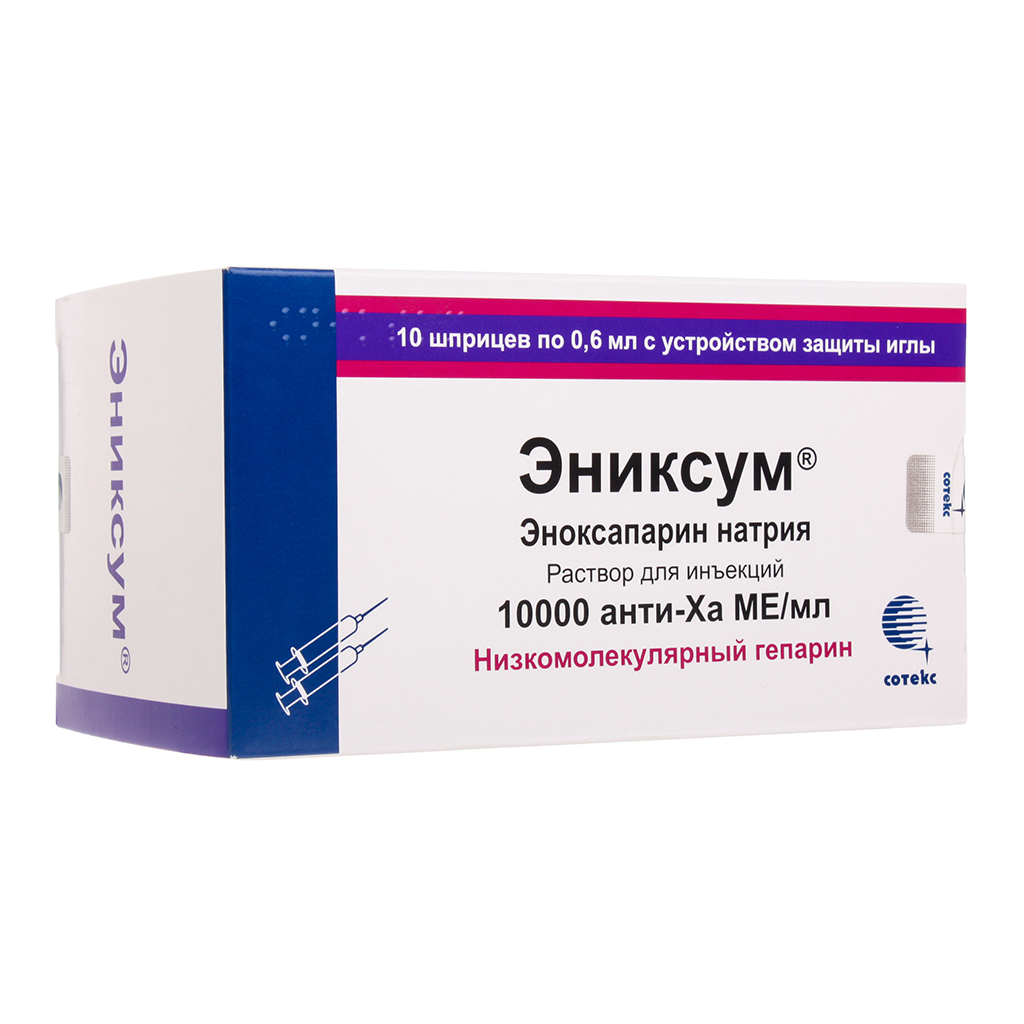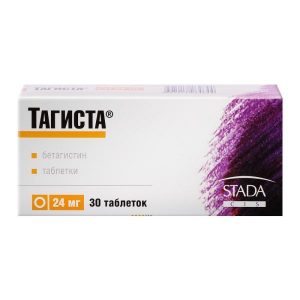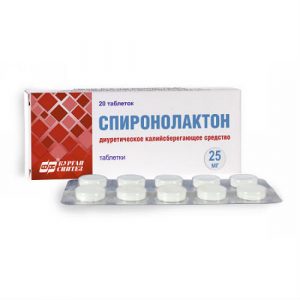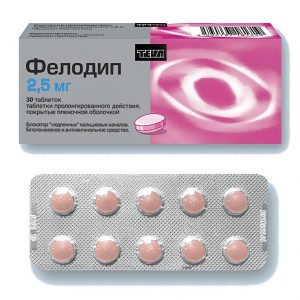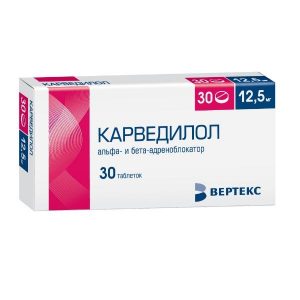Description
Pharmacological action of
Enoxaparin sodium is a low molecular weight heparin with an average molecular weight of about 4,500 daltons (Yes): less than 2000 Da – <20%, from 2000 to 8000 Yes -> 68%, more than 8000 Yes – <18%. Enoxaparin sodium is obtained by alkaline hydrolysis of heparin benzyl ester isolated from the mucous membrane of the pig ² ¢s small intestine. Its structure is characterized by a non-reducing fragment of 2-O-sulfo-4-enpyrazinosuronic acid and a recovering fragment of 2-N, 6-O-disulfo-D-glucopyranoside. The structure of enoxaparin sodium contains about 20% (ranging from 15% to 25%) 1, 6-anhydro derivative in the reducing fragment of the polysaccharide chain. Pharmacodynamics In a purified in vitro system, enoxaparin sodium has high anti-Xa activity (approximately 100 IU / ml) and low anti-IIa or antithrombin activity (approximately 28 IU / ml). This anticoagulant activity acts through antithrombin III (AT-III), providing anticoagulant activity in humans. In addition to anti-Xa / IIa activity, additional anticoagulant and anti-inflammatory properties of enoxaparin sodium were also detected in healthy people and patients, as well as in animal models. This includes AT-III-dependent inhibition of other coagulation factors, such as factor VIIa, activation of the release of the tissue factor pathway inhibitor (PTF), as well as a decrease in the release of von Willebrand factor from the vascular endothelium into the bloodstream. These factors provide the anticoagulant effect of enoxaparin sodium in general. When used in prophylactic doses, it slightly changes the activated partial thromboplastin time (APTT) and has practically no effect on platelet aggregation and the degree of binding of fibrinogen to platelet receptors. Pharmacokinetics: Bioavailability and absorption of The absolute bioavailability of enoxaparin sodium when administered subcutaneously (s / c), based on anti-Xa activity, is close to 100%. The average maximum anti-XA activity in blood plasma is observed 3-5 hours after s / c administration and reaches approximately 0.2, 0.4, 1.0 and 1.3 anti-XA ME / ml after a single s / c administration of the drug in a dosage of 20 mg, 40 mg, 1 mg / kg and 1.5 mg / kg. Intravenous bolus administration of the drug at a dose of 30 mg, accompanied by immediate subcutaneous administration of the drug at a dose of 1 mg / kg every 12 hours, provides an initial maximum anti-Xa activity of 1.16 IU / ml (n = 16), the average exposure in blood is approximately 88% of the equilibrium state, which is achieved on the second day of therapy. The pharmacokinetics of enoxaparin in these dosing regimens is linear. Variability within and between patient groups is low. After subcutaneous administration of 40 mg of enoxaparin sodium once a day and subcutaneous administration of enoxaparin sodium at a dose of 1.5 mg / kg body weight once a day in healthy volunteers, the equilibrium concentration is reached by day 2, and the average area under the pharmacokinetic curve is 15% higher than after a single injection. After repeated subcutaneous injections of enoxaparin sodium in a daily dose of 1 mg / kg body weight twice a day, the equilibrium concentration is reached after 3-4 days, and the area under the pharmacokinetic curve (AUC) is on average 65% higher than after a single injection, and average maximum concentrations are 1.2 IU / ml and 0.52 IU / ml, respectively. Anti-IIa plasma activity is about 10 times lower than anti-Xa activity. The average maximum anti-IIa activity is observed approximately 3-4 hours after subcutaneous administration and reaches 0.13 IU / ml and 0.19 IU / ml after repeated administration of 1 mg / kg of body weight with double administration and 1.5 mg / kg body weight with a single administration, respectively. Distribution of The volume of distribution of the anti-Xa activity of enoxaparin sodium is approximately 4.3 L and approaches the volume of circulating blood. Excretion Enoxaparin sodium is a low-clearance drug. After intravenous administration for 6 hours at a dose of 1.5 mg / kg body weight, the average anti-Xa clearance in plasma is 0.74 l / h. Withdrawal of the drug is monophasic with a half-life (T1 / 2) of about 5 hours (after a single subcutaneous injection) and about 7 hours (after repeated administration of the drug). Enoxaparin sodium is mainly metabolized in the liver by desulfation and / or depolymerization to form low molecular weight substances with very low biological activity. Excretion of active fragments of the drug through the kidneys is approximately 10% of the administered dose, and the total excretion of active and inactive fragments is approximately 40% of the administered dose. Special patient groups Elderly patients (over 75 years): the pharmacokinetic profile of enoxaparin sodium is not different in elderly patients and younger patients with normal renal function. However, a decrease in renal function with age may result in a slowdown in the elimination of enoxaparin sodium in elderly patients. Dysfunction of the liver: in a study involving patients with advanced liver cirrhosis who received enoxaparin sodium at a dosage of 4000 ME (40 mg) once a day, a decrease in maximum anti-Xa activity was associated with an increase in the severity of liver dysfunction (with a Child-Pugh score). This decrease was mainly due to a decrease in the level of AT-III, secondary to a decrease in the synthesis of AT-III in patients with impaired liver function. Impaired renal function: a decrease in clearance of enoxaparin sodium was noted in patients with impaired renal function. After repeated subcutaneous administration of 40 mg enoxaparin sodium once a day, there is an increase in anti-XA activity, represented by the area under the pharmacokinetic curve (AUC) in patients with impaired renal function of the lung (creatinine clearance (CC) 50-80 ml / min) and moderate severity (CC 30-50 ml / min). In patients with severe renal impairment (CC less than 30 ml / min), AUC in equilibrium is on average 65% higher with repeated subcutaneous administration of 40 mg of the drug once a day. Hemodialysis: the pharmacokinetics of enoxaparin sodium is comparable to that in the control population after a single iv dose of 25 IU, 50 IU or 100 IU / kg (0.25, 0.50 or 1.0 mg / kg), but there were two AUC times higher than in the control population. Body weight: after repeated sc administration at a dose of 1.5 mg / kg once a day, the average AUC of anti-Xa activity in equilibrium is slightly higher in patients with overweight (BMI 30-48 kg / m2) compared with patients with normal average body weight, while the maximum anti-Xa activity of blood plasma does not increase. In patients with excess body weight with subcutaneous administration of the drug, clearance is somewhat less. If you do not adjust the dose taking into account the patient ² ¢s body weight, then after a single subcutaneous injection of 40 mg of enoxaparin sodium, anti-Xa activity will be 52% higher in women with a body weight of less than 45 kg and 27% higher in men with a body weight of less than 57 kg compared with patients with normal average body weight. Indications – Prevention of venous thrombosis and embolism during surgical interventions in patients of moderate and high risk, especially during orthopedic and general surgical interventions, including oncological ones. – Prevention of venous thrombosis and embolism in patients on bed rest due to acute therapeutic diseases, including acute heart failure and decompensation of chronic heart failure (NYHA class III or IV), respiratory failure, as well as severe infections and rheumatic diseases with increased risk of venous thrombosis (see Special instructions). – Treatment of deep vein thrombosis with or without pulmonary thromboembolism, except pulmonary thromboembolism requiring thrombolytic therapy or surgery. – Prevention of thrombosis in the extracorporeal circulation system during hemodialysis. – Acute coronary syndrome: Treatment of unstable angina pectoris and myocardial infarction without ST-segment elevation in combination with oral administration of acetylsalicylic acid Treatment of acute myocardial infarction with ST-segment elevation in patients undergoing medication or subsequent percutaneous coronary intervention (PCI). Contraindications – Hypersensitivity to enoxaparin sodium, heparin or its derivatives, including other low molecular weight heparins. – Active clinically significant bleeding, as well as conditions and diseases, in which there is a high risk of bleeding, including a recent hemorrhagic stroke, acute gastrointestinal ulcer (GIT), the presence of malignant neoplasms with a high risk of bleeding, recent surgery on the brain and spinal cord, ophthalmic surgery, known or suspected presence of varicose veins esophageal veins, arteriovenous malformations, vascular aneurysms, vascular abnormalities of the spinal cord and brain. – Spinal or epidural anesthesia or local-regional anesthesia when enoxaparin sodium was used for treatment in the previous 24 hours. – Immuno-mediated heparin-induced thrombocytopenia (history) for the last 100 days or the presence of circulating antithrombocytes in the blood. – Children under 18 years old, since efficacy and safety in this category of patients have not been established. Precautions: Conditions where there is a potential risk of bleeding: – hemostatic disorders (including hemophilia, thrombocytopenia, hypocoagulation, von Willebrand disease, etc.), severe vasculitis – peptic ulcer or duodenal ulcer history of erosive ulceration of the gastrointestinal tract – recent history of ischemic stroke – uncontrolled severe arterial hypertension – diabetic or hemorrhagic retinopathy – severe diabetes mellitus s rdlkp – recently transferred or suspected neurological or ophthalmic surgery – spinal or epidural anesthesia (potential risk of hematoma), spinal puncture (recently transferred) – recent childbirth – bacterial endocarditis (acute or subacute) – pericarditis or pericardial effusion – renal and / or hepatic insufficiency – intrauterine contraception (IUD – severe neural trauma) srdl , open wounds on large surfaces of – simultaneous administration of drugs that affect the hemostasis system – heparin-induced thrombocytopenia without a history of circulating antibodies (more than 100 days). There are no data on the clinical use of enoxaparin sodium in the following diseases: active tuberculosis, radiation therapy (recently transferred). Composition 1 syringe (0.6 ml) contains: Active ingredient: enoxaparin sodium 60 mg Excipients: water for injection – up to 0.6 ml. Dosage and Administration Subcutaneously, except in special cases. Prevention of venous thrombosis and embolism during surgical interventions in patients with moderate to high risk For patients with a moderate risk of developing thrombosis and embolism (for example, abdominal surgery), the recommended dose of Enixum ® is 20 mg once daily subcutaneously. The first injection should be made 2 hours before surgery. Patients at high risk of developing thrombosis and embolism (for example, during orthopedic surgeries, surgical operations in oncology, patients with additional risk factors not related to surgery, such as congenital or acquired thrombophilia, malignant neoplasm, bed rest for more than three days, obesity, history of venous thrombosis, varicose veins of the lower extremities, pregnancy) the drug is recommended at a dose of 40 mg once a day subcutaneously, with the introduction of the first dose 12 hours before surgery. If earlier preoperative prophylaxis is necessary (for example, in patients at high risk of developing thrombosis and thromboembolism awaiting delayed orthopedic surgery), the last injection should be given 12 hours before surgery and 12 hours after surgery. The duration of treatment with Enixum is on average 7-10 days. If necessary, therapy can be continued until the risk of thrombosis and embolism remains, and until the patient switches to an outpatient setting. For major orthopedic surgeries, it may be advisable after initial therapy to continue treatment by administering the drug Enixum ® at a dose of 40 mg once a day for five weeks. For patients at high risk of venous thromboembolism who underwent surgery, abdominal and pelvic surgery due to cancer, it may be advisable to increase the duration of administration of the drug Enixum ® at a dose of 40 mg once a day for four weeks. Prevention of venous thrombosis and embolism in patients on bed rest due to acute therapeutic diseases The recommended dose of Enixum ® is 40 mg once a day, subcutaneously, for 6-14 days. Therapy should be continued until the patient has completely switched to an outpatient regimen (for a maximum of 14 days). Treatment of deep vein thrombosis with pulmonary thromboembolism or without pulmonary thromboembolism The drug is administered subcutaneously at a rate of 1.5 mg / kg body weight once a day or 1 mg / kg body weight twice a day. The dosage regimen should be selected by the physician based on an assessment of the risk of thromboembolism and the risk of bleeding. In patients without thromboembolic complications and with a low risk of developing venous thromboembolism, the drug is recommended to be administered subcutaneously at a rate of 1.5 mg / kg body weight once a day. In all other patients, including patients with obesity, symptomatic pulmonary embolism, cancer, repeated venous thromboembolism and proximal thrombosis (in the iliac vein), the drug is recommended to be used at a dose of 1 mg / kg twice a day. Duration of treatment is on average 10 days. Indirect anticoagulant therapy should be started immediately, and treatment with Enixum ® should be continued until the therapeutic anticoagulant effect is achieved (INR [International Normalized Relationship] values should be 2.0-3.0). Prevention of thrombosis in the extracorporeal circulatory system during hemodialysis The recommended dose of Enixum ® is on average 1 mg / kg body weight. With a high risk of bleeding, the dose should be reduced to 0.5 mg / kg body weight with double vascular access or 0.75 mg / kg with a single vascular access. During hemodialysis, Enixum ® should be administered into the arterial area of the shunt at the beginning of the hemodialysis session. One dose, as a rule, is enough for a four-hour session, however, if fibrin rings are detected with longer hemodialysis, you can additionally introduce the drug at a rate of 0.5-1 mg / kg body weight. Data on patients using enoxaparin sodium for prophylaxis or treatment and during hemodialysis sessions are not available. Treatment of unstable angina pectoris and myocardial infarction without raising the ST segment Enixum ® is administered at a rate of 1 mg / kg body weight every 12 hours, subcutaneously, with simultaneous use of antiplatelet therapy. The average duration of therapy is at least 2 days and continues until the patient’s clinical condition stabilizes. Usually, drug administration lasts from 2 to 8 days. Acetylsalicylic acid is recommended for all patients who have no contraindications, with an initial dose of 150-300 mg orally, followed by a maintenance dose of 75-325 mg once in knocking. Treatment of acute myocardial infarction with ST-segment elevation, medication or with percutaneous coronary intervention Treatment begins with a single intravenous bolus of enoxaparin sodium at a dose of 30 mg. Immediately after it, enoxaparin sodium is administered subcutaneously at a dose of 1 mg / kg body weight. Further, the drug is administered subcutaneously at 1 mg / kg body weight every 12 hours (maximum 100 mg of enoxaparin sodium for each of the first two subcutaneous injections, then 1 mg / kg of body weight for the remaining subcutaneous doses, that is, with a body weight of more than 100 kg single dose may not exceed 100 mg). As soon as possible after the detection of acute myocardial infarction with ST segment elevation, patients should be prescribed acetylsalicylic acid at the same time and, if there are no contraindications, acetylsalicylic acid (in doses of 75-325 mg) should be continued daily for at least 30 days. The recommended duration of treatment with Enixum ® is 8 days or until the patient is discharged from the hospital (if the hospitalization period is less than 8 days). When combined with thrombolytics (fibrin-specific and fibrin-non-specific), enoxaparin sodium should be administered between 15 minutes before starting thrombolytic therapy and 30 minutes after it. In patients 75 years of age and older, the initial intravenous bolus is not used. The drug is administered subcutaneously at a dose of 0, 75 mg / kg every 12 hours (maximum 75 mg of enoxaparin sodium for each of the first two subcutaneous injections, then 0.75 mg / kg of body weight for the remaining subcutaneous doses, that is, with a body weight of more than 100 kg, a single dose cannot exceed 75 mg). In patients undergoing percutaneous coronary intervention, if the last subcutaneous injection of enoxaparin sodium was performed less than 8 hours before the balloon catheter was introduced into the site of the coronary artery narrowing, additional administration of enoxaparin sodium is not required. If the last subcutaneous injection of enoxaparin sodium was carried out more than 8 hours before the balloon catheter was inflated, an additional intravenous bolus injection of enoxaparin sodium at a dose of 0.3 mg / kg should be performed. Side effects of The side effects of enoxaparin sodium were studied in more than 15,000 patients who participated in clinical trials, of which 1776 patients prevented venous thrombosis and embolism during general and orthopedic operations in 1169 patients and prevented venous venous thrombosis patients in bed rest due to acute therapeutic diseases in 559 patients – in the treatment of deep vein thrombosis with pulmonary embolism or without pulmonary embolism in 1578 patients – in the treatment of unstable angina and myocardial infarction without Q wave in 10176 patients – in the treatment of elevated myocardial infarction ST segment. Enoxaparin sodium administration regimen was different depending on the indication. In the prevention of venous thrombosis and embolism during general surgical and orthopedic operations or in patients on bed rest, 40 mg was administered subcutaneously once a day. When treating deep vein thrombosis with or without pulmonary embolism, patients received enoxaparin sodium at a rate of 1 mg / kg body weight subcutaneously every 12 hours or 1, 5 mg / kg body weight subcutaneously once a day. In the treatment of unstable angina pectoris and myocardial infarction without Q wave, the dose of sodium enoxaparin was 1 mg / kg body weight subcutaneously every 12 hours, and in the case of myocardial infarction with ST segment elevation, an intravenous bolus injection of 30 mg followed by 1 mg / kg body weight subcutaneously every 12 hours The frequency of adverse reactions was determined according to the classification of the World Health Organization: very often ( 1/10) often ( 1/100 and <1/10) infrequently ( 1/1000 and <1/100 ) rarely ( 1/10000 and <1/1000) very rarely (<1/10000), frequencies unknown (can not be calculated on the basis of the available data). Vascular disorders Bleeding In clinical trials, bleeding was the most common adverse reaction. These included large bleeding observed in 4.2% of patients (bleeding was considered large if it was accompanied by a decrease in hemoglobin by 2 g / l or more, required transfusion of 2 or more doses of blood components, and also if it was retroperitoneal or intracranial ) Some of these cases were fatal. As with other anticoagulants when using enoxaparin sodium, bleeding may occur, especially if there are risk factors that contribute to the development of bleeding, during invasive procedures or the use of drugs that violate hemostasis. In the description of bleeding, the * sign means an indication of the following types of bleeding: hematoma, ecchymosis (other than those developed at the injection site), wound hematomas, hematuria, nosebleeds, and gastrointestinal bleeding. Very common: bleeding * in the prevention of venous thrombosis in surgical patients and in the treatment of deep vein thrombosis with or without pulmonary embolism. Often: bleeding * in the prevention of venous thrombosis in patients on bed rest and in the treatment of unstable angina, myocardial infarction without Q wave and myocardial infarction with ST segment elevation. Infrequently: retroperitoneal bleeding and intracranial hemorrhage in patients treating deep vein thrombosis with or without pulmonary embolism, as well as in the treatment of myocardial infarction with ST segment elevation. Rarely: retroperitoneal hemorrhages in the prevention of venous thrombosis in surgical patients and in the treatment of unstable angina and myocardial infarction without Q wave. Thrombocytopenia and thrombocytosis Very often: thrombocytosis (number of thrombocytes in 10 to 10 patients with peripheral blood vessels) patients and the treatment of deep vein thrombosis with or without pulmonary embolism. Often: thrombocytosis in the treatment of patients with acute myocardial infarction with ST segment elevation. Thrombocytopenia in the prevention of venous thrombosis in surgical patients and in the treatment of deep vein thrombosis with or without pulmonary embolism, as well as in acute myocardial infarction with ST segment elevation. Infrequently: thrombocytopenia in the prevention of venous thrombosis in patients on bed rest and in the treatment of unstable angina and myocardial infarction without Q wave. Very rare: autoimmune thrombocytopenia in the treatment of patients with acute myocardial infarction with ST segment elevation. Other clinically significant adverse reactions, regardless of the indications The adverse reactions presented below are grouped into organ-system classes, given the frequency of occurrence defined above and in decreasing order of severity. Disorders of the blood and lymphatic system: often: bleeding, thrombocytopenia, thrombocytosis rare: cases of development of autoimmune thrombocytopenia with thrombosis in some cases, thrombosis was complicated by the development of heart attack or limb ischemia. Immune system disorders: often: allergic reactions. Disorders from the liver and biliary tract: very often: increased activity of liver enzymes, mainly increased activity of transaminases, more than three times the upper limit of normal. Disorders of the skin and subcutaneous tissue: often: urticaria, pruritus, erythema. infrequently: bullous dermatitis. Common disorders and disorders at the injection site: often: hematoma at the injection site, pain at the injection site, edema at the injection site, bleeding, hypersensitivity reactions, inflammation, formation of seals at the injection site. infrequently: irritation at the injection site, skin necrosis at the injection site. data, obtained after the drug entered the market The following adverse reactions were observed with post-marketing use of enoxaparin sodium. There were spontaneous reports of these adverse reactions. Immune system disorders: rare: anaphylactic / anaphylactoid reactions, including shock. Disorders of the nervous system: often: headache. Vascular disorders: rare: when using enoxaparin sodium against the background of spinal / epidural anesthesia or spinal puncture, there have been cases of the development of spinal hematoma (or neuroaxial hematoma). These reactions led to the development of neurological disorders of varying severity, including persistent or irreversible paralysis. Disorders of the blood or lymphatic system: often: hemorrhagic anemia rare: eosinophilia Disorders of the skin and subcutaneous tissue: rare: alopecia at the injection site can develop skin vasculitis, skin necrosis, which is usually preceded by the appearance of purpura or erythematous papules (infiltrated and painful). In these cases, enoxaparin sodium therapy should be discontinued. The formation of solid inflammatory nodules-infiltrates at the injection site of the drug is possible, which disappear after a few days and are not grounds for drug withdrawal. Hepatic and biliary tract disorders: infrequent: hepatocellular liver damage rare: cholestatic liver damage. Disorders of the musculoskeletal and connective tissue: rare: osteoporosis with prolonged therapy (more than three months). Laboratory and instrumental data: rare: hyperkalemia. Overdose of Accidental overdose of enoxaparin sodium with intravenous, extracorporeal or subcutaneous administration can lead to hemorrhagic complications. When ingesting even large doses, absorption of the drug is unlikely. Anticoagulant effects can be largely neutralized by slow intravenous administration of protamine sulfate, the dose of which depends on the dose of the drug administered. One mg (1 mg) of protamine sulfate neutralizes the anticoagulant effect of one mg (1 mg) of enoxaparin sodium (see information on the use of protamine salts) if enoxaparin sodium was administered no more than 8 hours before the administration of protamine. 0.5 mg of protamine neutralizes the anticoagulant effect of 1 mg of the drug if more than 8 hours have passed since the last injection or, if necessary, the introduction of a second dose of protamine. If 12 hours or more have passed after the administration of enoxaparin sodium, administration of protamine is not required. However, even with the introduction of large doses of protamine sulfate, anti-Xa, the activity of enoxaparin sodium is not completely neutralized (by a maximum of 60%). Storage conditions At a temperature not exceeding 25 ° C (do not freeze). Keep out of the reach of children. Expiration 2 years Deystvuyuschee substances noksaparyn sodium drugstore terms pd6r13 vacations from drugstores By prescription
